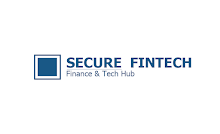As more businesses and individuals use the cloud, protecting the security of our data has become more important than ever. Cloud computing provides unprecedented ease and flexibility, but it also poses a slew of new risks.
As with any technological breakthrough, new obstacles emerge, and answers to these challenges become critical. One of the most important issues in cloud computing is security. This post will delve into the finest cloud security procedures to assist you in keeping your data safe.
Understand Your Cloud Model
There are three service models in cloud computing: Infrastructure as a Service (IaaS), Platform as a Service (PaaS), and Software as a Service (SaaS). Each model has its own set of security issues. Knowing what kind of device you use will assist you in implementing the necessary security measures.
- IaaS: In this approach, users are responsible for managing the operating system, data, and applications. As a result, the user bears a major portion of the responsibility for security.
- PaaS: The cloud provider maintains everything from the infrastructure to the software applications in this paradigm. Users are in charge of controlling their data and the programs they install.
- SaaS: The cloud provider manages it, and consumers only need to use the software. Nonetheless, it is critical to guarantee that data is secured and that access is properly managed.
Use Strong Authentication Measures
Every user who accesses your cloud resources should be identified. To add an extra degree of security, use multi-factor authentication (MFA). MFA requires a user to provide two or more sources of verification, such as something they know (password) and something they have (security token or phone).
Encrypt Your Data
To prevent unauthorized access, encryption converts your data into a code. Ensure that your data is encrypted both at rest and in transit.
- Data that is at rest is data that is not actively moving.
- In transit data: Data that is being transported from one location to another, such as from local storage to the cloud.
Regular Backups
Make sure you have a backup routine in place. It is critical to have a recovery system in place in case something goes wrong. It is nonetheless important to safeguard your backups. Ensure that they are encrypted and stored separately from the essential data.
- Educate Your Team
Human error can be a significant vulnerability. Regularly train your team on security best practices and keep them up to date on the current risks. This not only fosters a proactive culture, but also ensures that everyone is on the same page when it comes to security.
- Vet Your Cloud Provider
All cloud providers are not the same. Examine their security operations and check if they meet industry requirements. It's also a good idea to find out whether they have any security certifications and how frequently they have independent security audits.
- Use Cloud-native Security Tools
Most cloud services include security features that are built-in. Get familiar with yourself with these tools and use them to their best capacity. They are designed to work in tandem with your cloud services and can provide real-time threat analysis, monitoring, and response.
- Manage User Permissions Strictly
Adopt the principle of least privilege (PoLP). Only give access rights to those who truly need it. Review and revise permissions regularly, and make sure to revoke access for employees who no longer need it, such as those who have left the company or changed roles.
- Regularly Monitor and Audit
Adopt the least privilege principle (PoLP). Only grant access to those who actually require it. Regularly review and amend permissions and ensure access is revoked for individuals who no longer use it, such as those who have left the firm or changed jobs.
- Have an Incident Response Plan
You must act swiftly in the frustrated case of a breach. In the event of a security incident, an incident response plan details the procedures to be taken. This includes discovering the breach, containing the damage, contacting those affected, and taking steps to prevent it from happening again.
Cloud security is a collaborative effort. While cloud providers have safeguards in place, users must also do their part to maintain the security of their data. The threats to cloud computing will alter as they evolve.








1 Comments
Cloud is everything now and so ensuring security in my opinion is of the highest priority
ReplyDelete